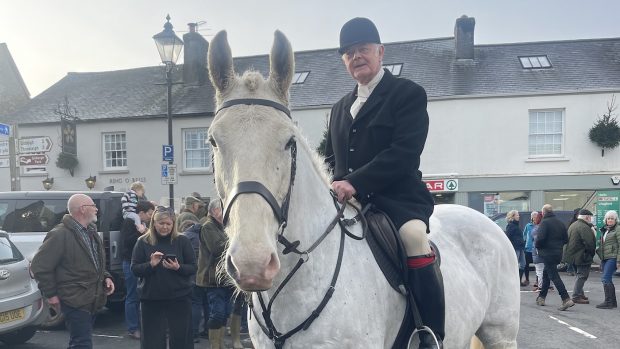Riders were left reeling in December when it was announced that a number of hats would no longer be eligible for competition in the near future.
The change is the result of a decision by the European Union (EU) that the EN 1384 standard was to be withdrawn from the Official Journal of the European Union (OJ) — the official compendium of EU legislation.
The complete removal of the standard occurred as an agreement could not be reached on updating the base European standard.
The decision means that EN 1384 hats can no longer be manufactured. However, wholesalers and retailers can continue to sell them, and they are still safe to ride in.
The fallout has also caused British governing and riding bodies to reconsider their hat rules and phase out the standard.
However, the British Equestrian Trade Association (BETA) told H&H there is no need for change for riders who wear (BS)EN 1384 but do not compete.
“Hats certified to this standard have reduced injuries and saved countless lives,” said BETA’s Claire Williams. “The protection that EN 1384 offers has not changed.”
The news left many riders confused about which hats are safe and which they will be able to wear for competitions in future.
Helen Riley, technical and safety product manager for Gatehouse Hats, told H&H that the “short notice” of the decision was “bound to cause confusion”.
“Riders are assessing if there is any impact for the hats they currently wear in relation to the riding activities which they participate in, while retailers are assessing what it means for the lines they stock and the type of customers they serve,” added Champion’s Sarah-Jane Fedarb.
“We are talking to riders and retailers on a daily basis, helping to clarify the situation.”
Competition riders
The new regulations for competition riders have been met with widespread anger from the equestrian community.
“This is ridiculous,” said one H&H reader. “Perfectly safe hats have to be replaced in 12 months due to an agreement not being made?”
“Most people can’t afford a new helmet just because the EU decides they should,” added another.
Tensions have run particularly high in the showing community, where compulsory hat regulations are enforced only by certain societies.
Last year there was widespread criticism when Sport Horse Breeding of Great Britain SHB(GB) announced all competitors must wear safety headgear.
The implementation of the rule led to the British Sports Horse Association (BSHA) taking over the Horse of the Year Show qualifiers, which it is continuing to run in 2015.
Upon the introduction of the rule many riders made the switch to the Charles Owen “Fiona” hat, which was designed specifically with show riders in mind.
However, the Fiona is the only hat in the Charles Owen range that does not hit the PAS015 qualification and is now no longer being made.
The SHB(GB) guidelines state that: “Anyone on a horse at an affiliated show must wear a dark coloured riding hat according to the current approved BSI or European Standard at all times.”
Therefore, although the society has not changed its rules, with the removal of the EN 1384 standard the Fiona is no longer acceptable according to SHB(GB)’s rules.
“So, having invested in a new hat just a few months ago — the Fiona — I won’t be able to compete,” complained one rider.
Looking forward
Despite complaints, the removal of the standard has led to new hats entering the market.
Several new designs were unveiled at last month’s BETA International (22-24 February).
Patey, one of Britain’s most traditional hat makers, launched a new safety standard hat.
The Patey PRO has a carbon fibre reinforced shell and meets the Snell E2001 standard.
“It was the much-debated changes in the safety regulations for riders in the UK that prompted Patey to design the new riding cap,” a spokesman from the company confirmed.
Ref: Horse & Hound; 12 March 2015





